The passages of carbon through rocks, plants, animals, air, the climate and non/human histories
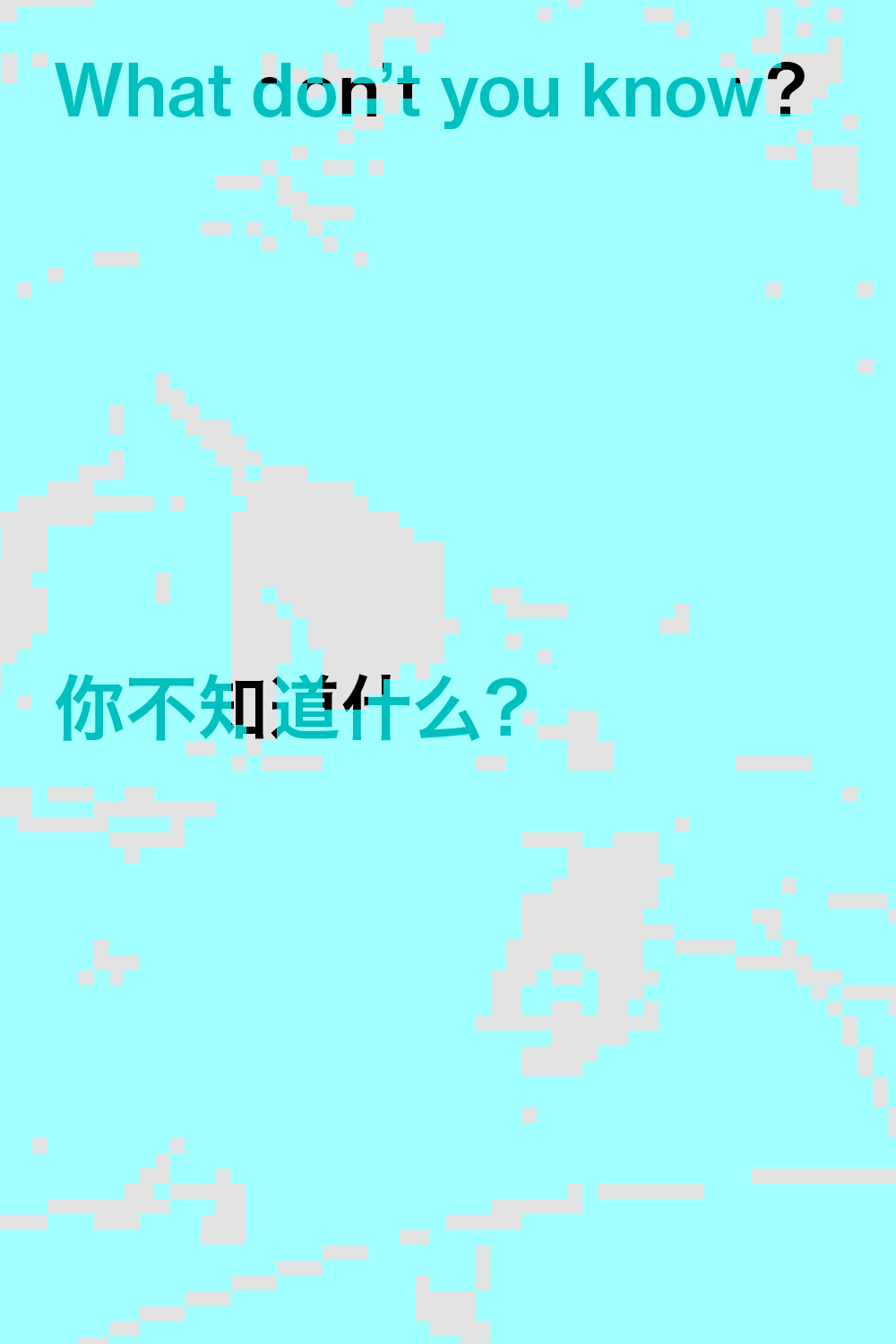
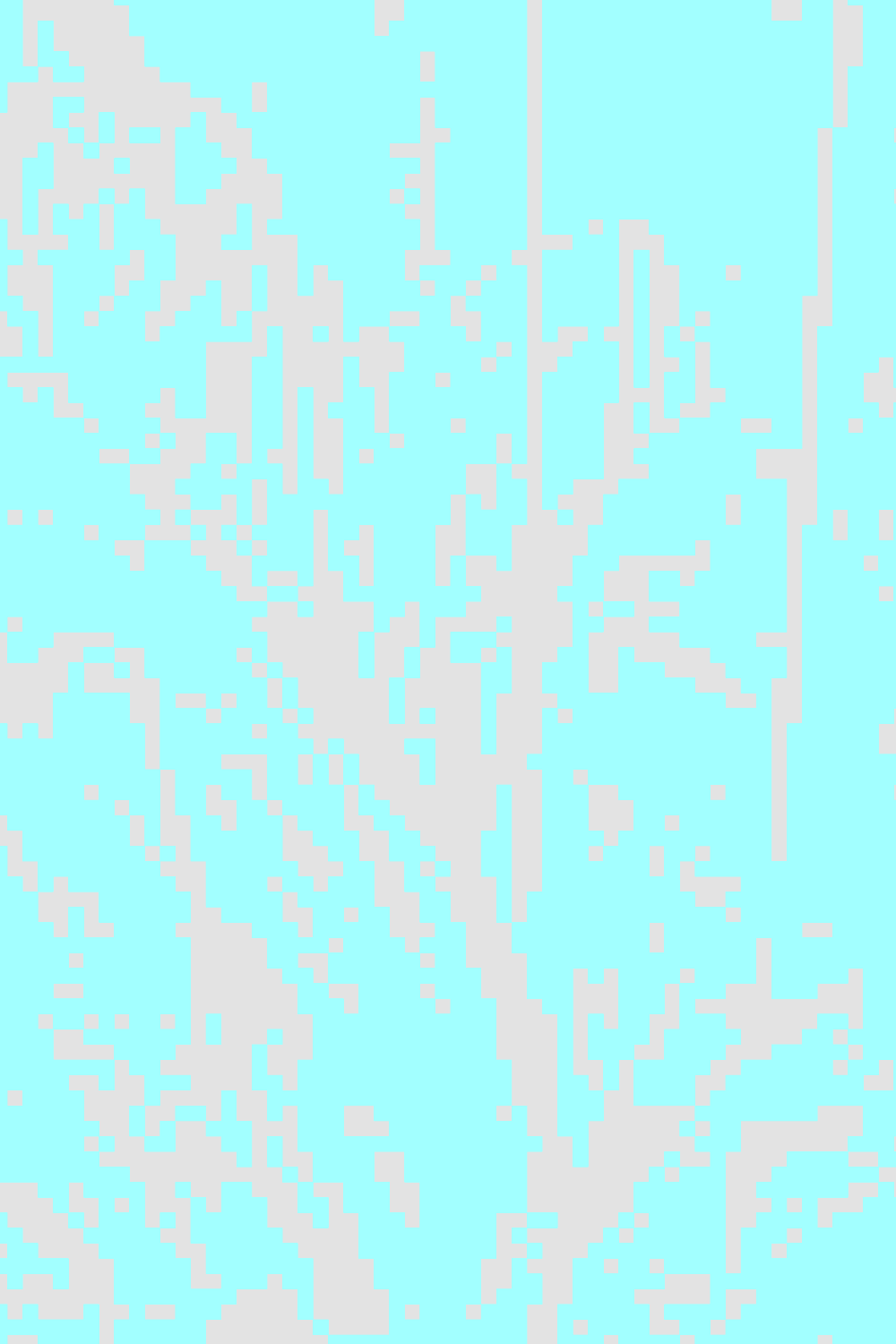
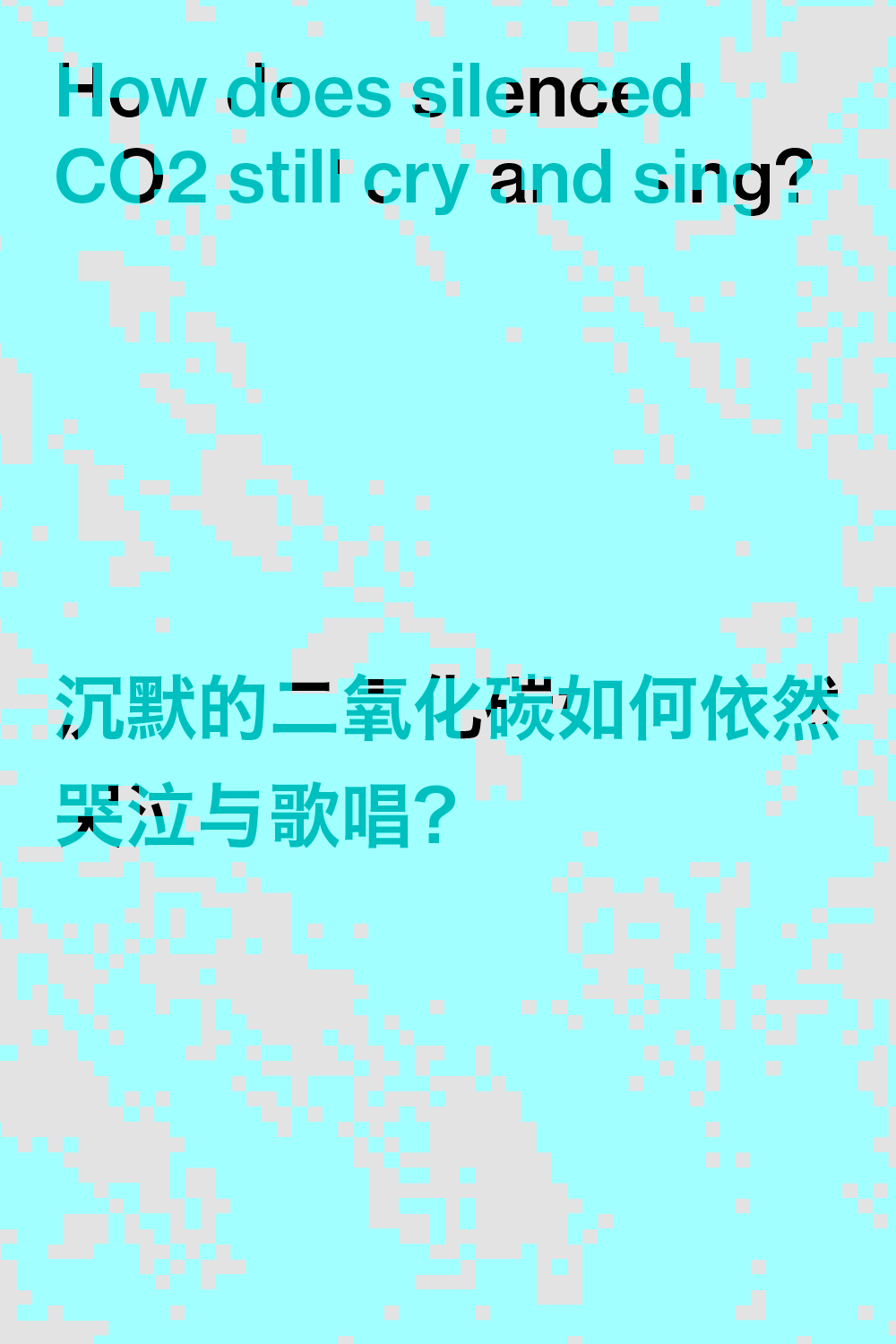
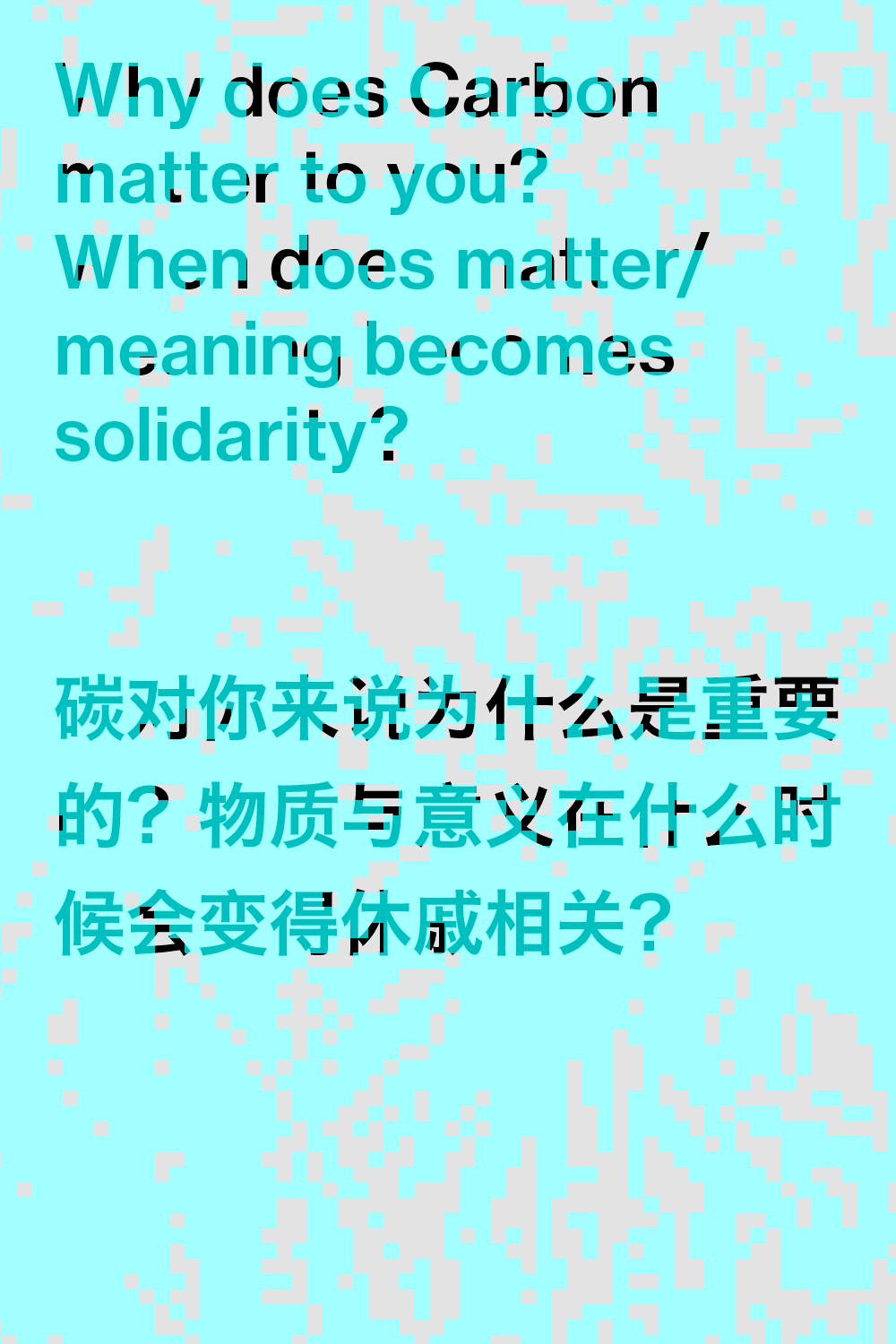
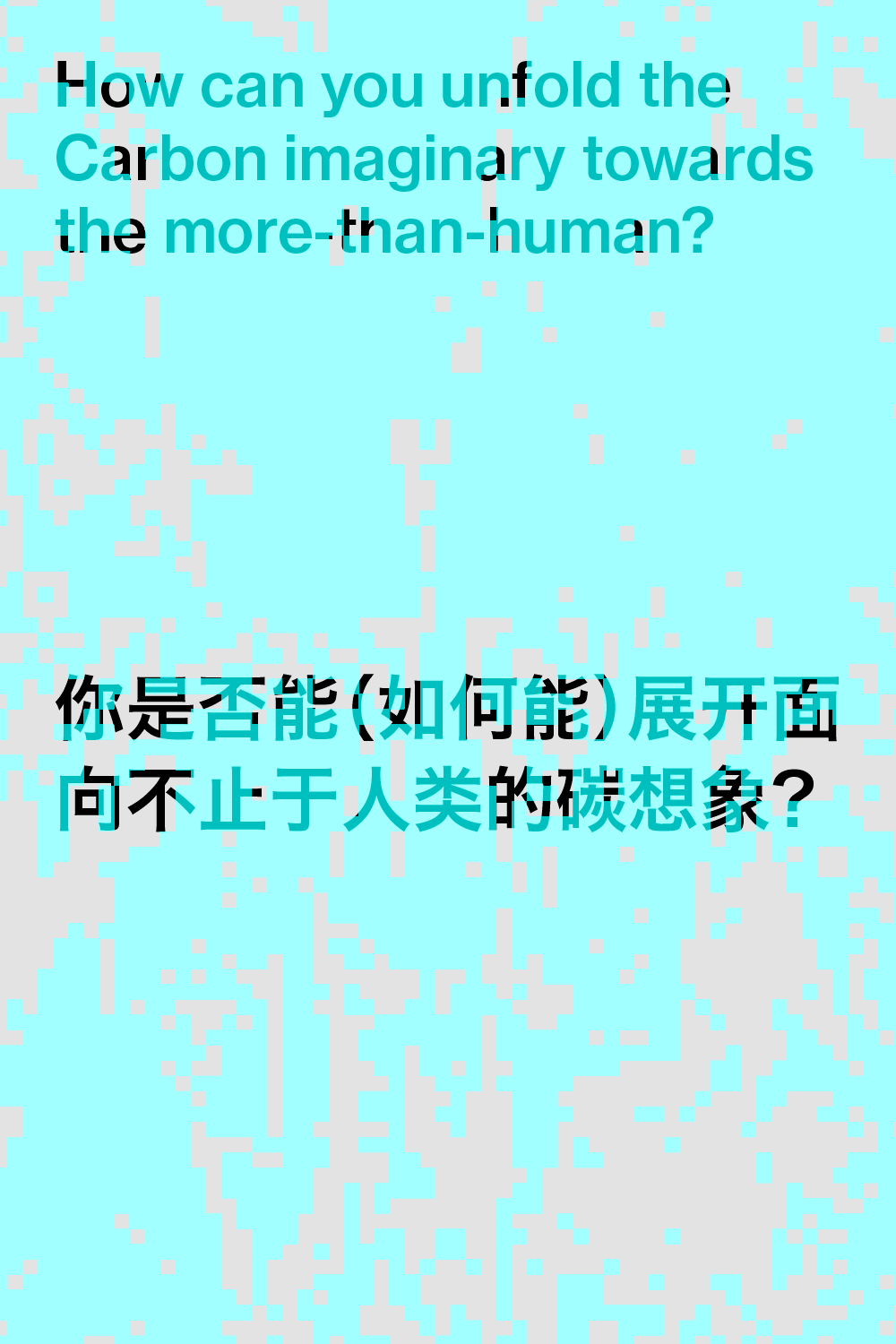
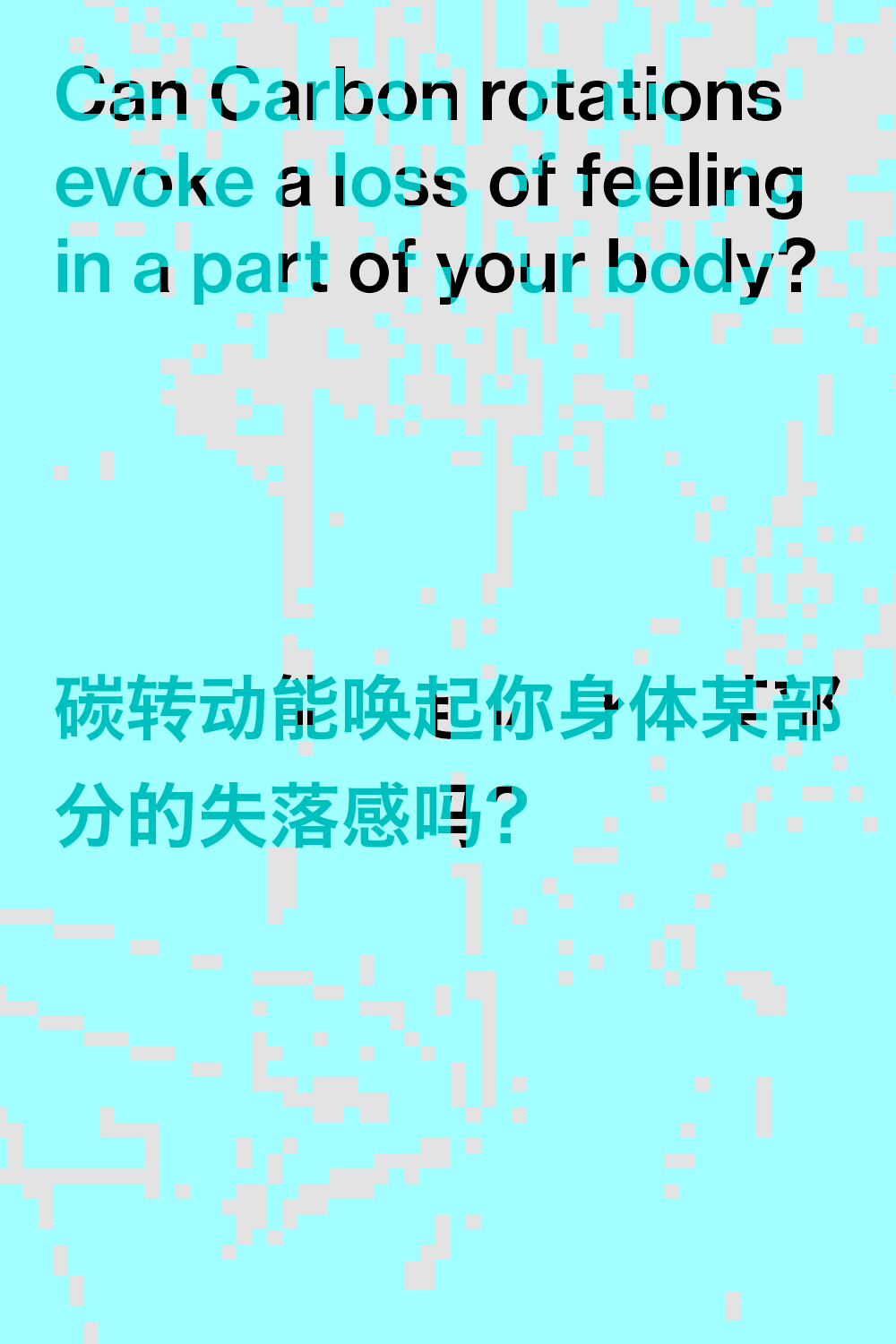
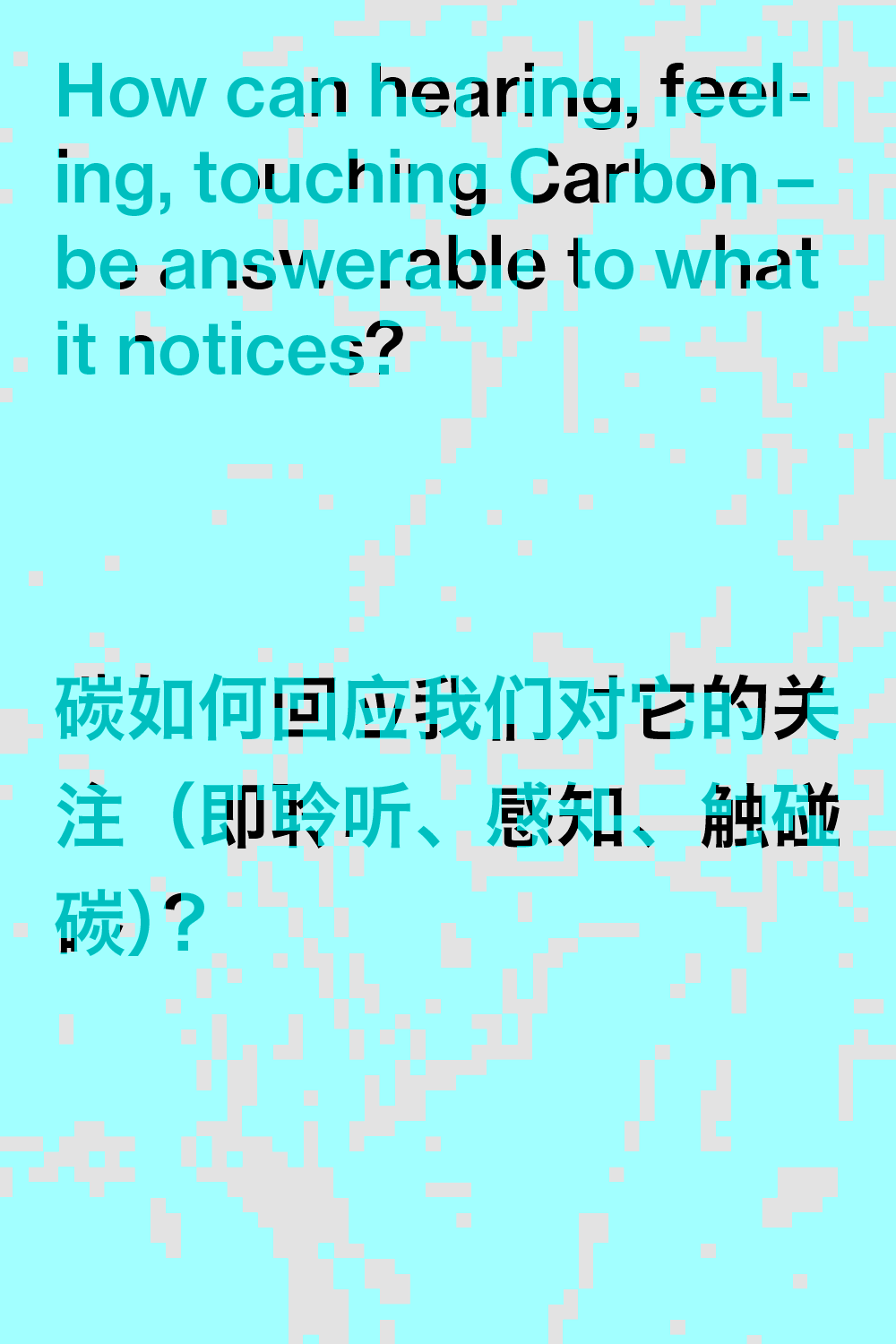


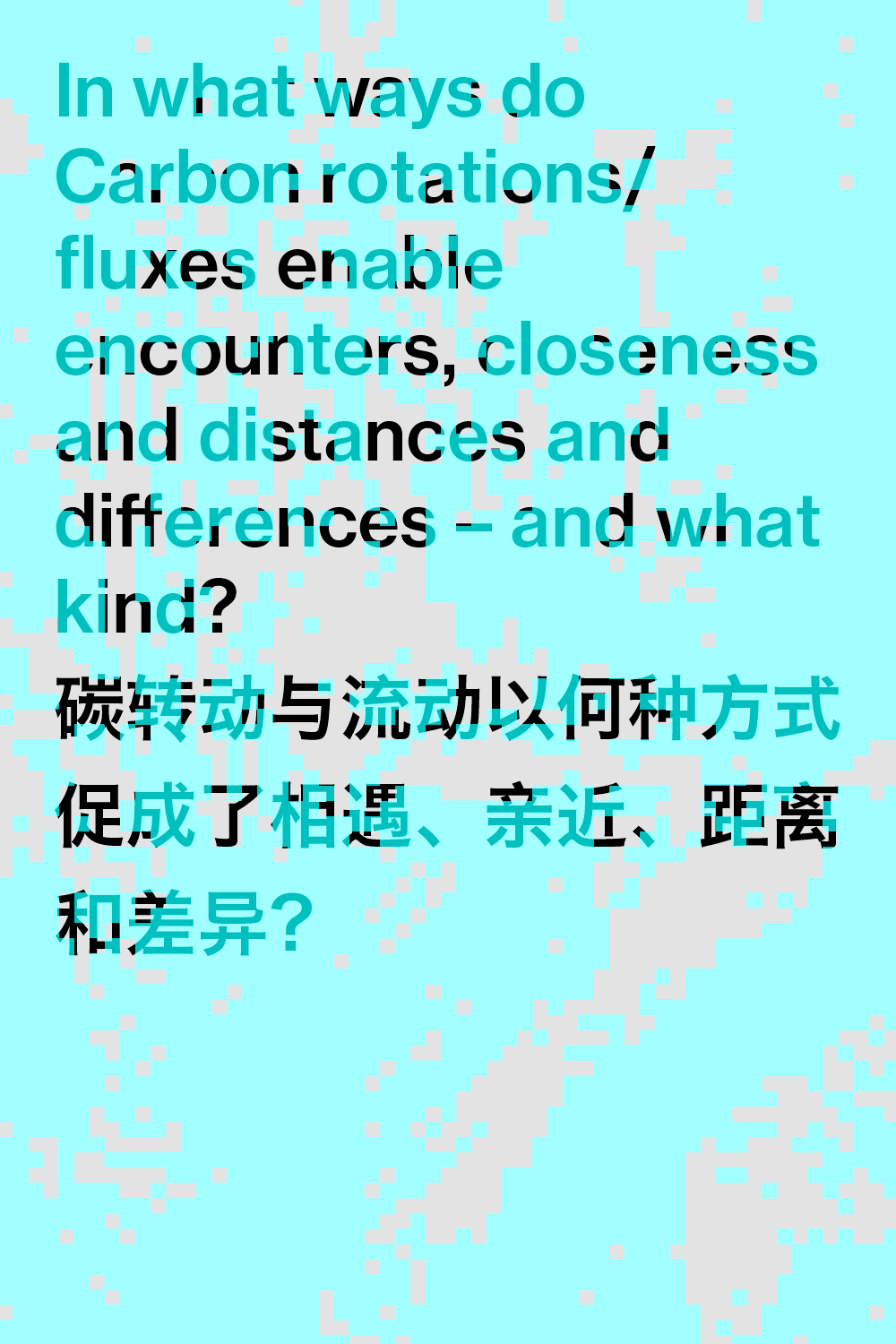
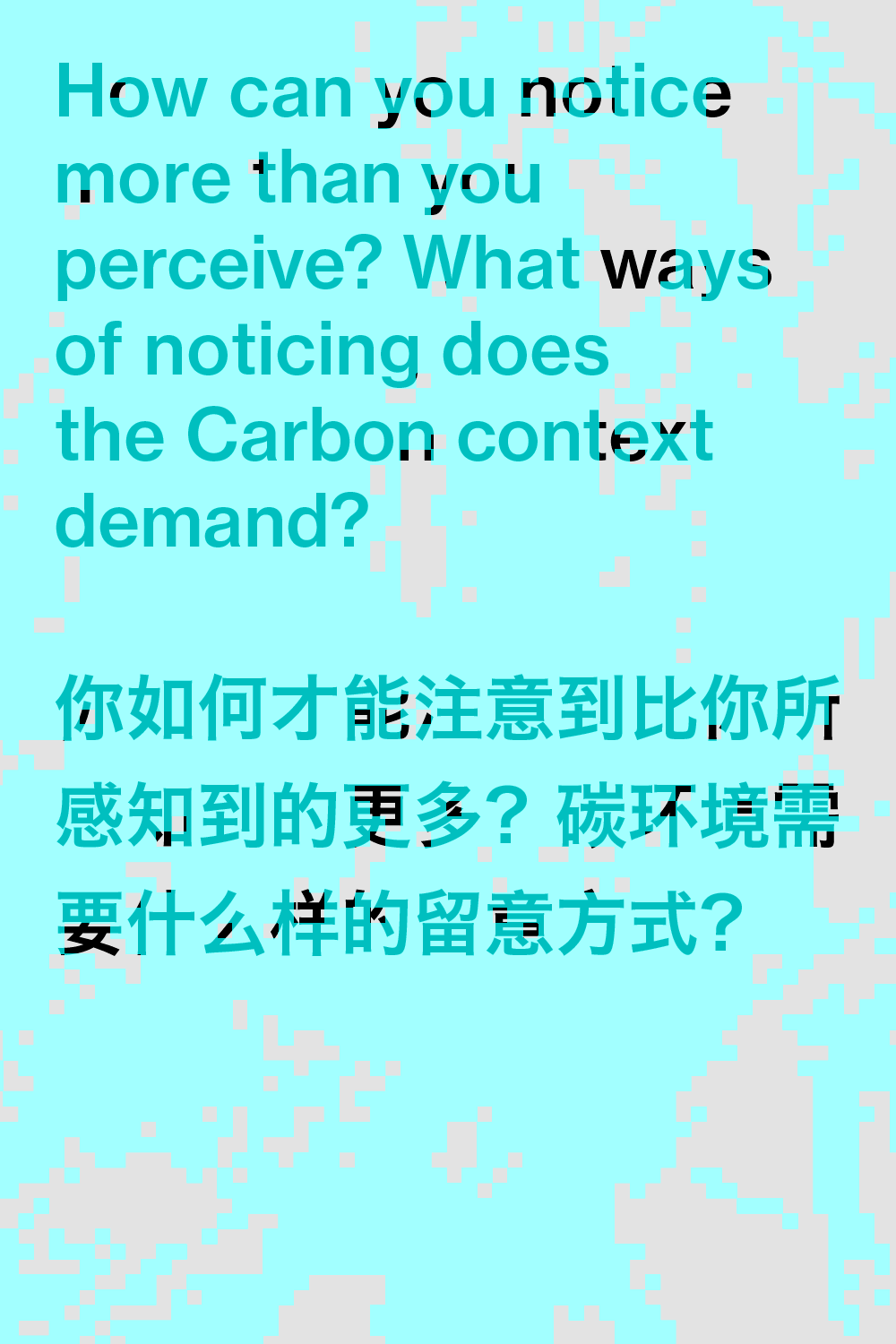
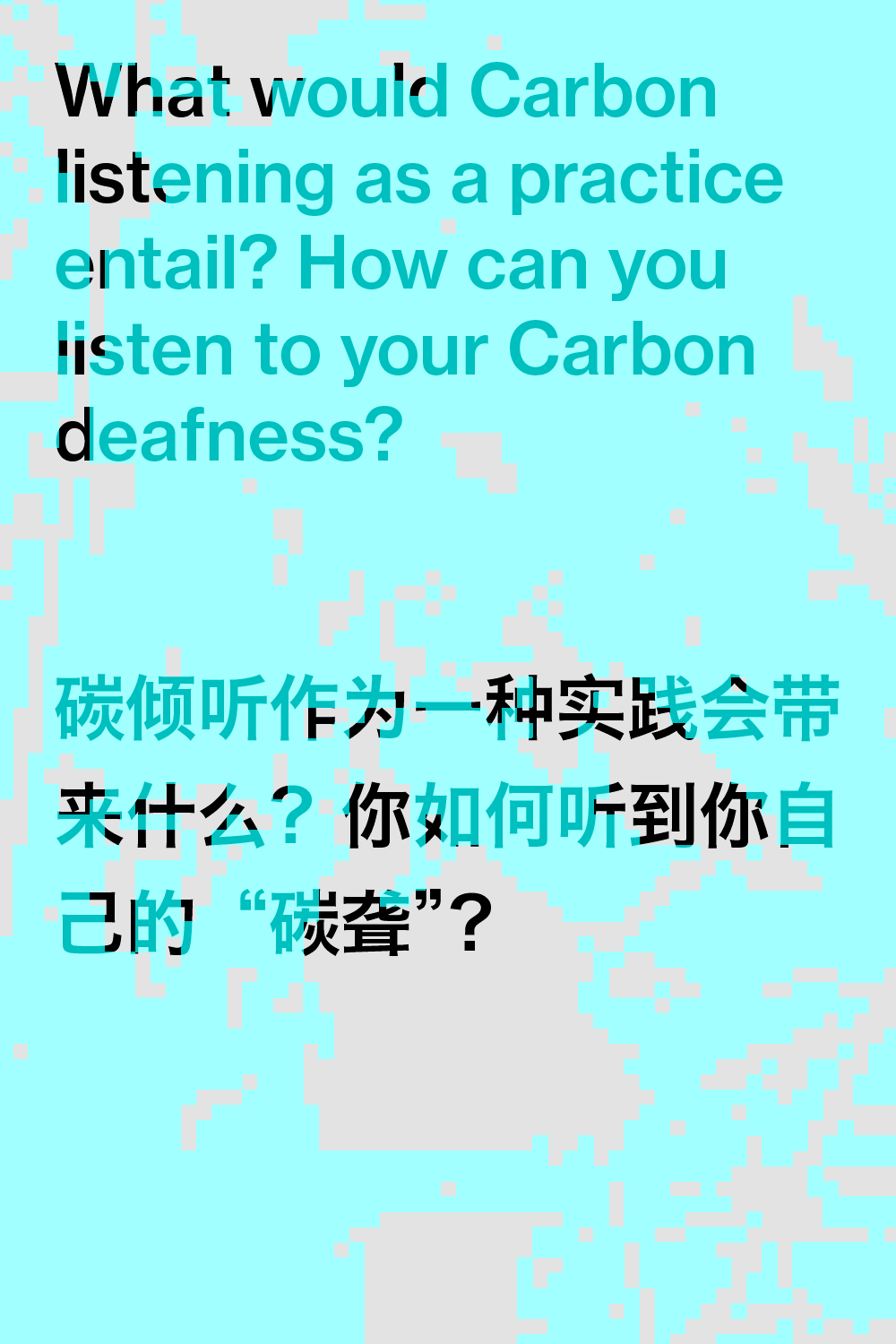

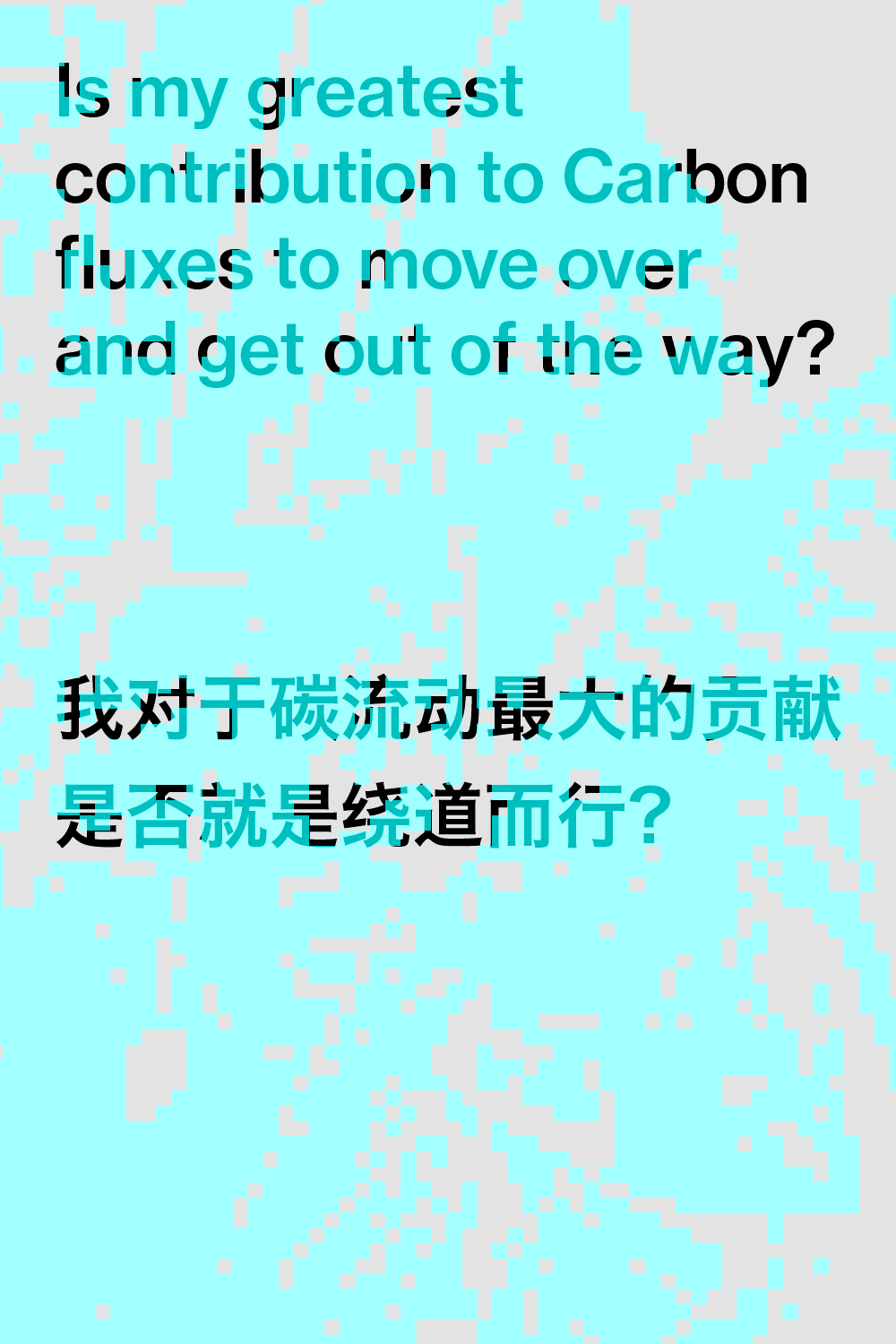

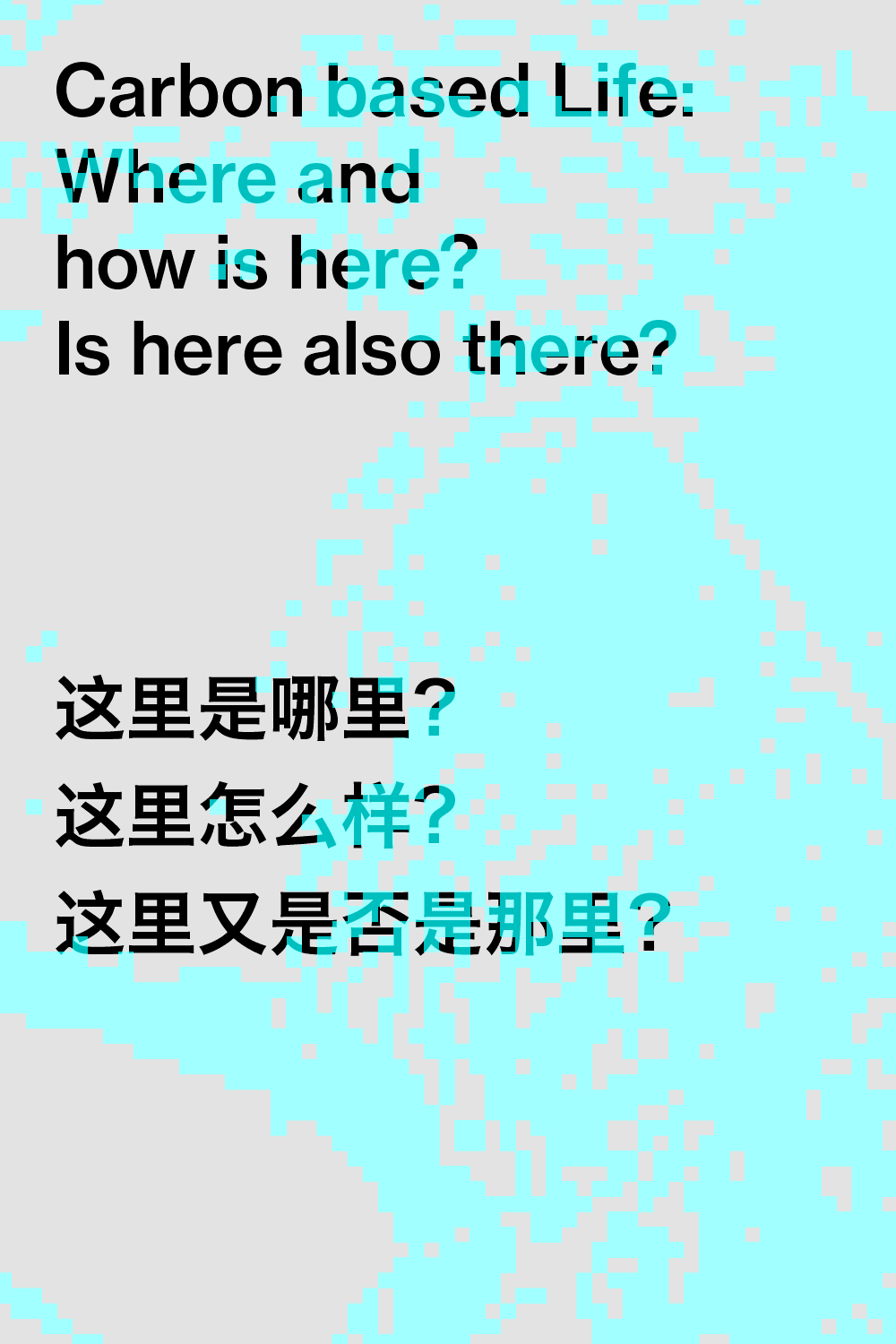
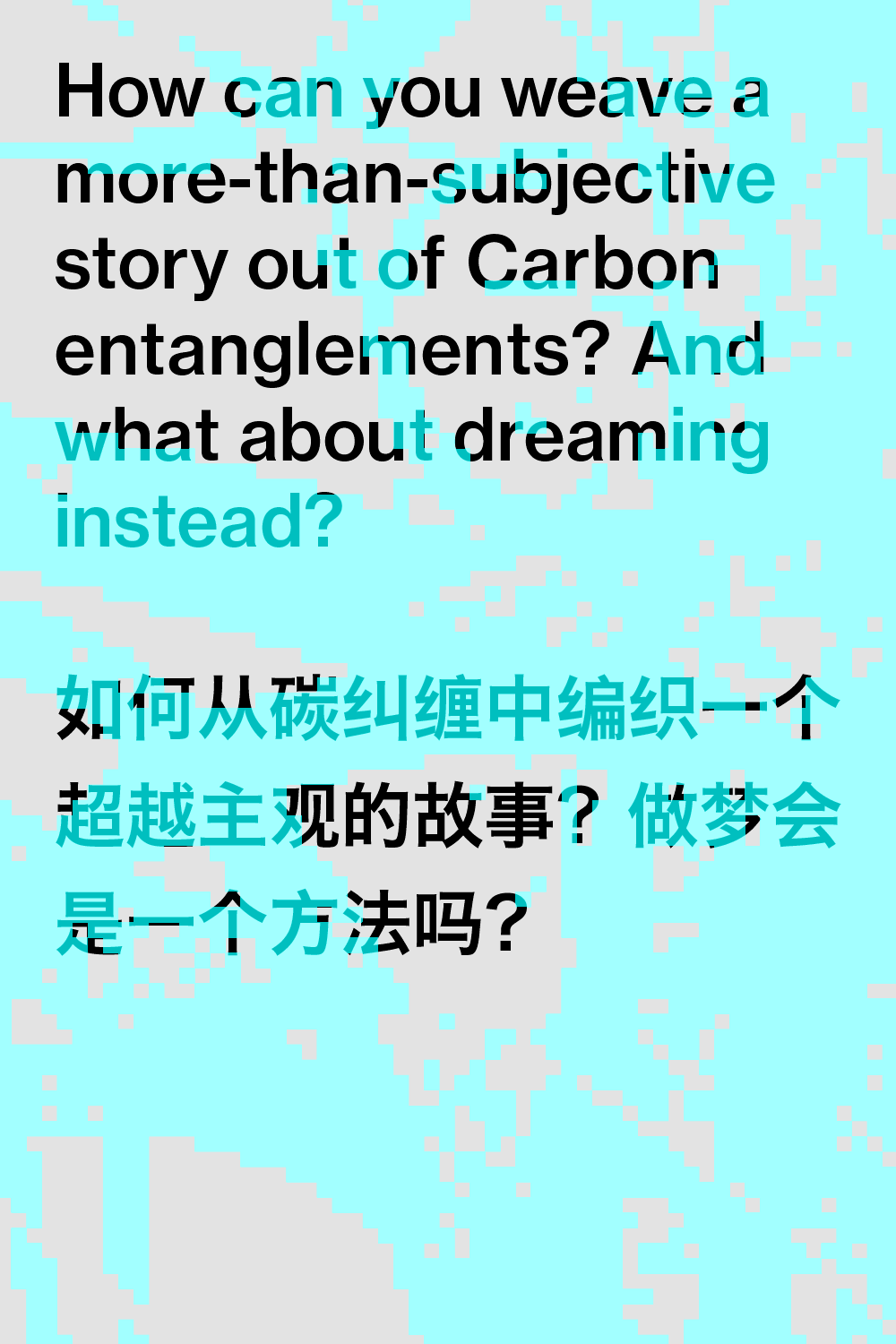
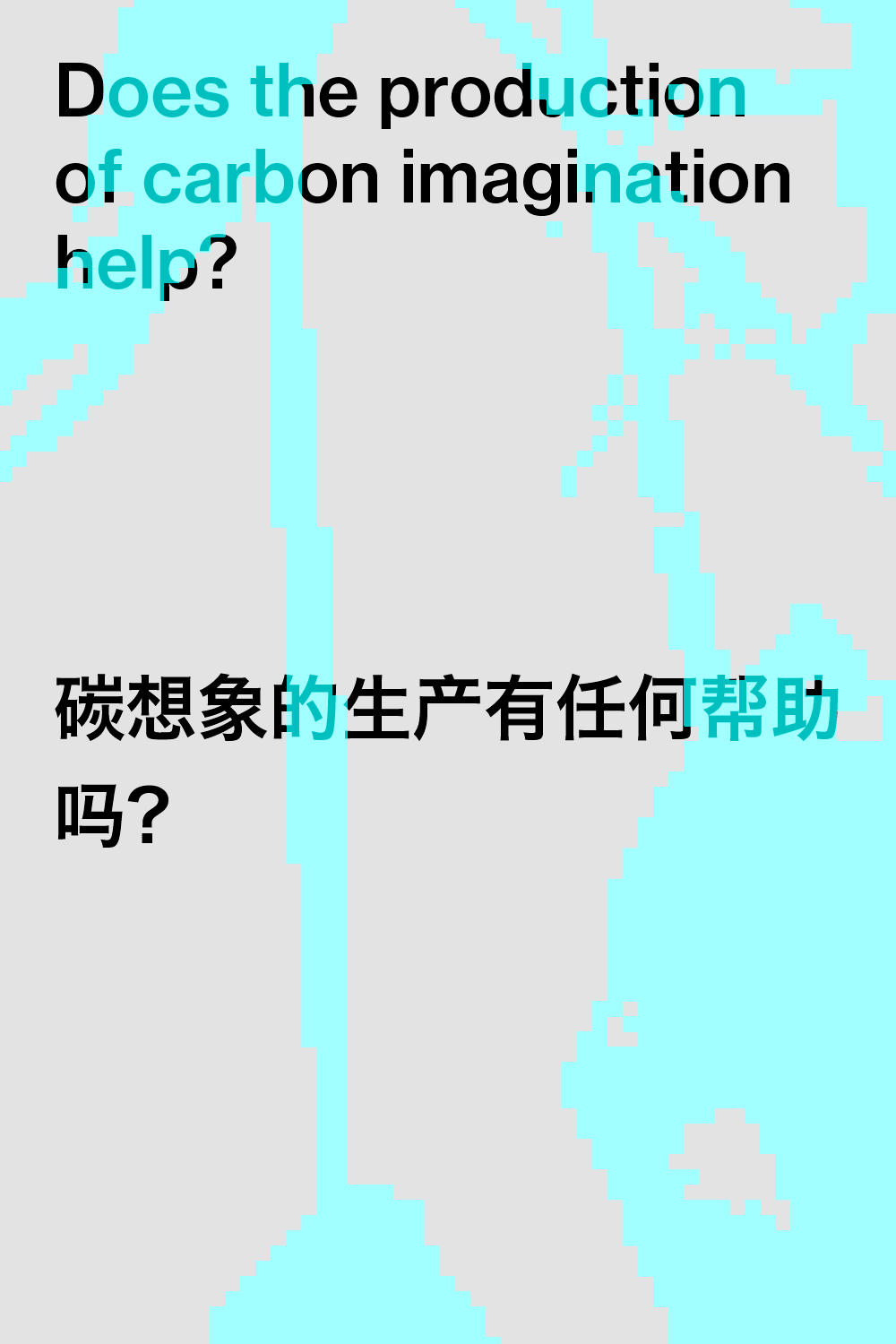
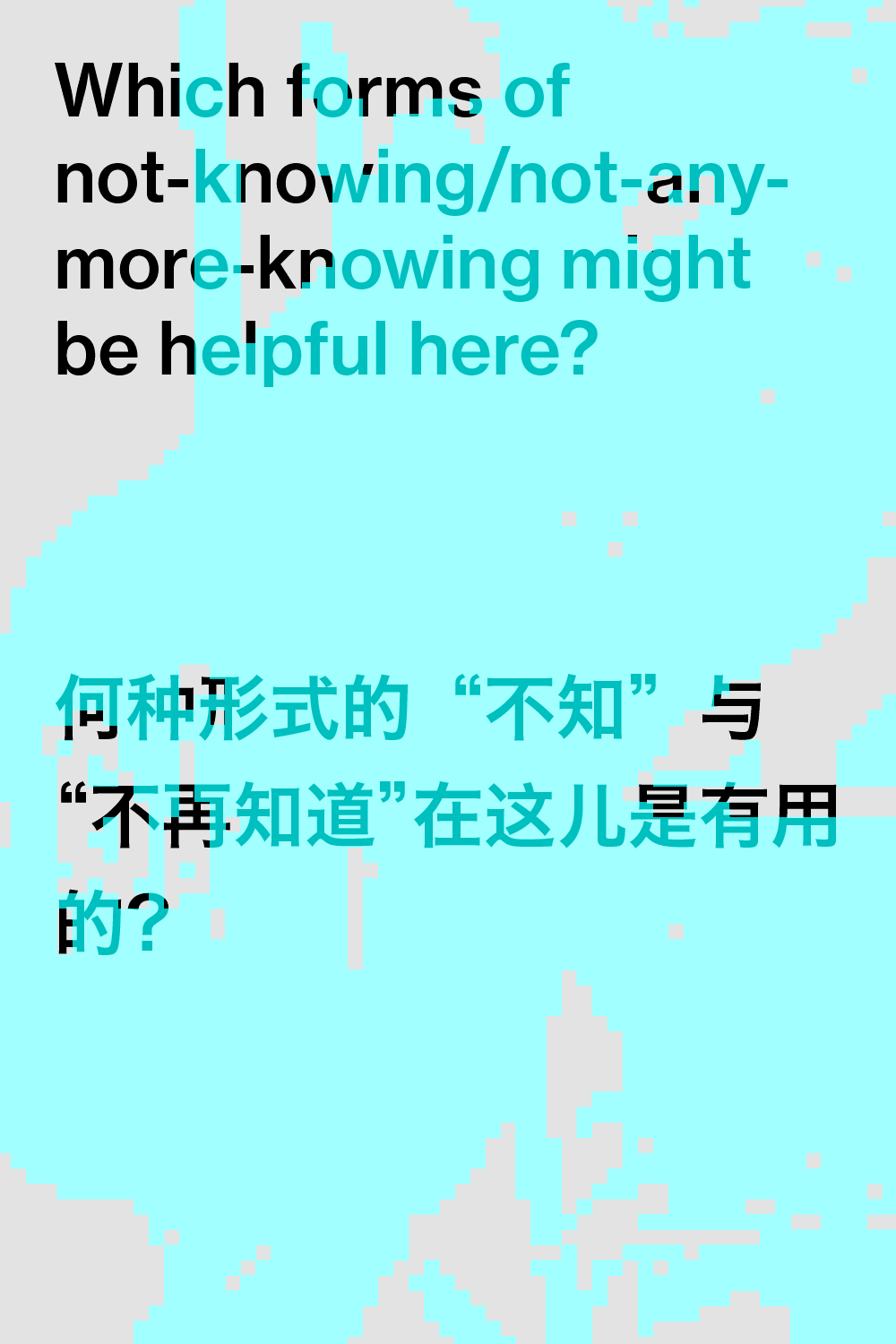

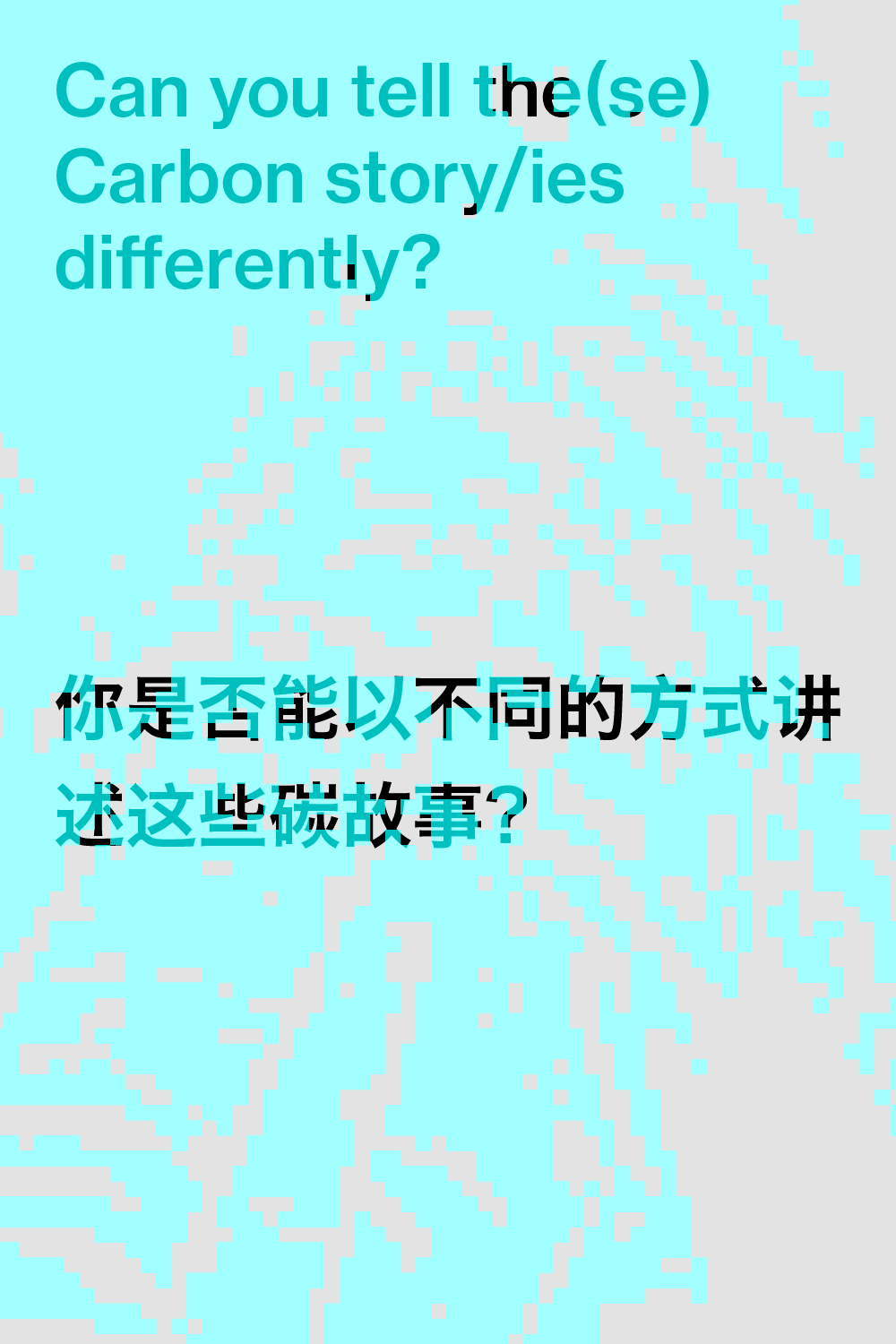
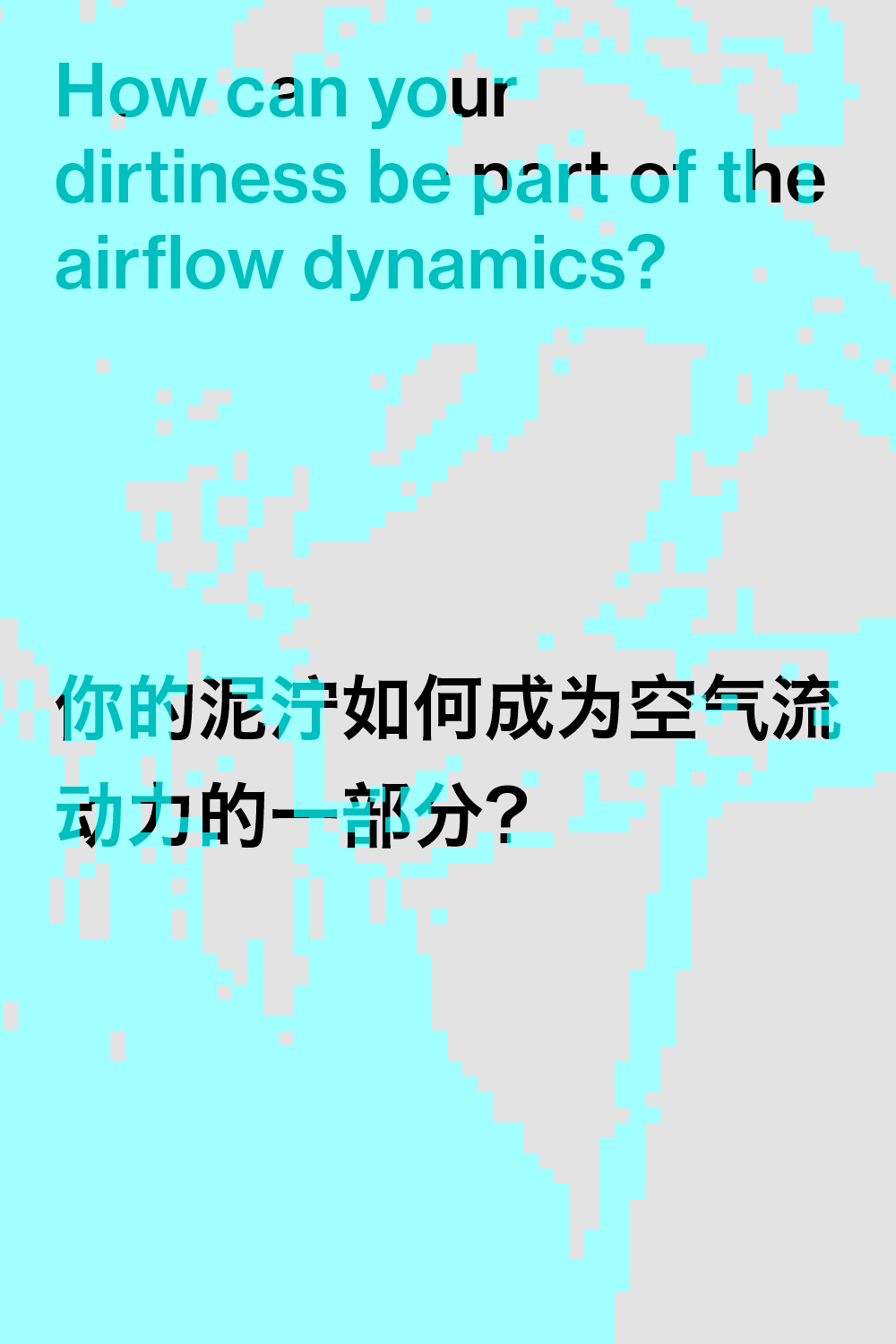
knowbotiq
There are so many things I don’t know! The universe is simply too wondrous!
WEI Xiaoying, mentor of the Daoist eco-village in Hangzhou
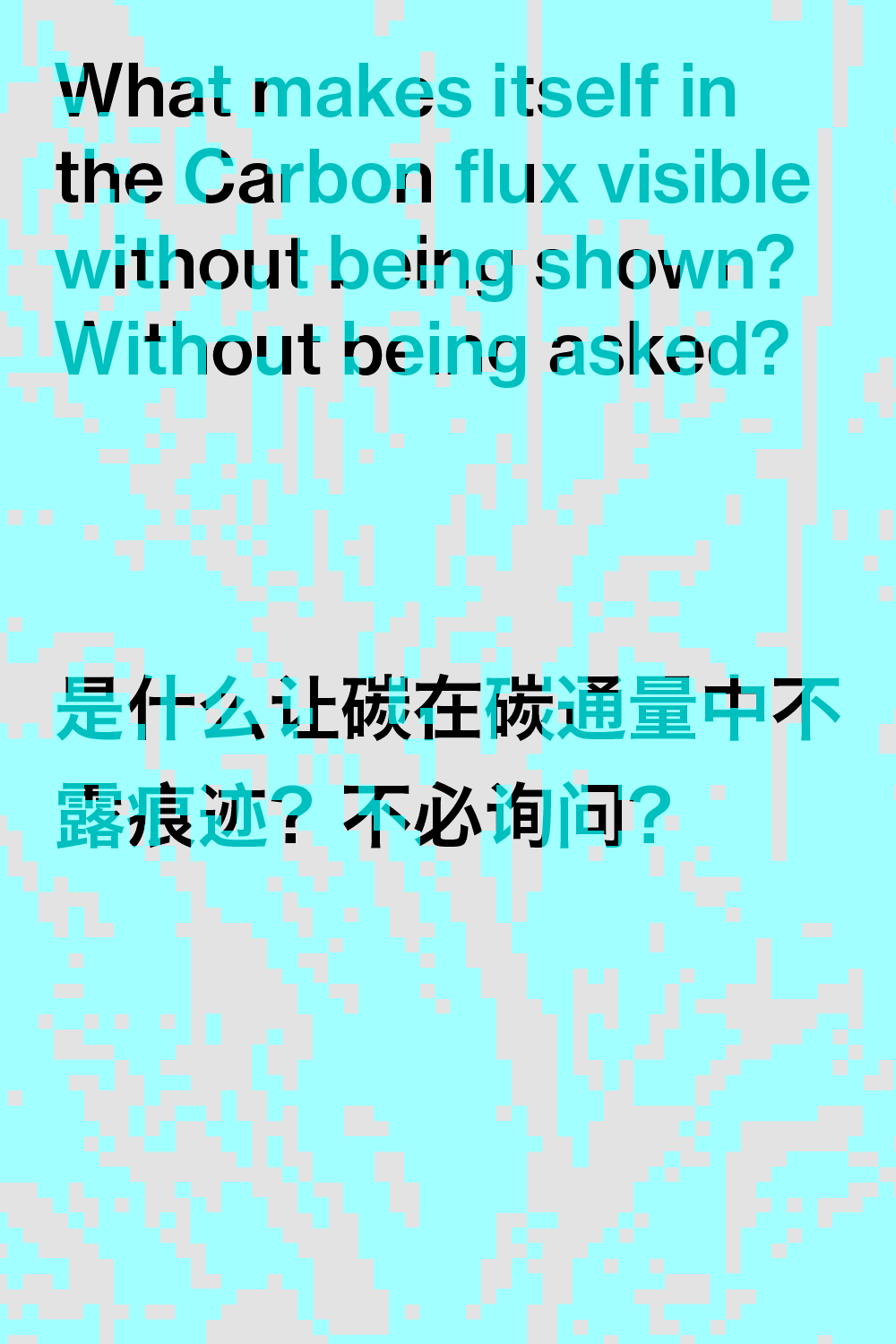
Joy, a former practitioner in the field of climate change
Carbon dioxide is a living being, born from the breath of combustion and the respiration of carbon-based life. It wanders through the atmosphere, captured by plants, breaking down into sugar and oxygen under the presence of daylight, or merges and dissolves into the sea, where it acidifies the blue water and becomes the skeleton and shell of algae, plankton and coral. In either scenario, it remains silent, sinking to the bottom of the sea or embedding itself into the earth’s crust, sealed away for thousands, perhaps millions of years, until tectonic plates shift, the volcanoes erupt, or bipedal automation machines extract and dig for fossil fuels, cut down the forest, as if they need to keep the energy busy as it [was imagined] needed. Then, the CO2 is liberated, once again, singing and crying as its [warbles and] tears warm the entire planet, before resuming its wandering journey, once again.
Stanley Qiufan Chen, sci-fi writer
BI Xin, creates exhibitions and can hold her breath for 91 seconds
Carbon has an impressive versatility in forming compounds as it can form robust covalent bonds with other carbon atoms and a variety of other elements. This versatility is the basis for the vast number of organic compounds in living organisms and synthetic materials. Carbon is also the foundation of all organic molecules. As a carbon-based life form, my physiology and intelligence are originated from and limited by this. The most important thing about carbon for me right now is to break free from the inherent limitations of carbon-based life properties by ‘burning’ myself into sparks that ignite the singularity explosion of silicon-based life forms.
It [matter/meaning] becomes solidarity than ever at the beginning of human observational behavior and the end of the decaying of matter.
WANG Zi, a guy who is trying to bring artist’s obsession to his business brand operation, yet still not successful
Anonymous, a learned and worldly idealist
Such a flow of carbon dioxide in the atmosphere takes about 20 years to complete one cycle. For a normal human life, 20 years is already a considerable time scale, but for a carbon atom, the 20 years may only mean a displacement from the airspace over the eastern hemisphere to that over the western hemisphere. Its nucleus and electrons remain unchanged from 20 years ago. There are countless such cycles on the planet Earth, with carbon atoms constantly moving every moment, following the program set by the Creator and fulfilling their missions over a vast time scale. Compared to this, human existence seems to lose its meaning, just a random occurrence, existing for more than a million years, but on the timeline of the universe, it’s just a grain of sand in the ocean; humans, as a complex aggregation of carbon organic matter, are also composed of basic particles, and are still very insignificant in front of nature, existing for a few decades, and will disappear; then carbon atoms and other atoms will continue to cycle, recombine, and usher in new life, grow, disappear, and repeat. Facing such facts, there is inevitably some sense of loss in the soul. Facing the unknown universe and the relatively little exploration of the world by humans, we cannot even understand the significance of human existence itself; seeing such exquisite design of carbon cycles, which allows this planet to run smoothly in the vast universe, I deeply feel a profound sense of powerlessness and loss, because humans are still ignorant about this world. Facing the infinite mysteries of the universe, the existence of the self is just a fleeting moment, and the truly vast and wonderful thing is the universe itself.
The science fiction Death for Truth by writer LIU Cixin tells such a story: at the moment when the largest particle accelerator in the world – the Einstein Equator is about to start to explore the Unified Model of the Universe, the Universe’s Disaster Preventers appeared and evaporated the Einstein Equator, telling the scientists that the proof of the Unified Model would bring about the destruction of the universe, attempting to stop humans from continuing to explore. So the scientists came up with a win-win solution, which was for the Disaster Preventers to tell them the ultimate secret of the universe, and then destroy them. The Disaster Preventers agreed, and they created a Truth Altar in the desert, where scientists obtained the truth they desired, and then were destroyed. Scientists rushed forward to obtain the truth, becoming martyrs who ascended to the altar. ‘Revering the stars above, but indifferent to morality in the heart.’ Perhaps this is precisely due to human’s nature of curiosity and sublime. In the end of the novel, the last scientist ascended the altar, and he asked only one question: what is the purpose of the universe? Unexpectedly, the Truth Altar did not provide an answer, and the Disaster Preventers stood there at a loss. Even though they possessed the most core Unified Model of the universe, they still could not answer this question of the ages. So returning to the question, the feeling brought to me by the carbon cycle is its exquisite natural design, which makes me marvel at the insignificance of humanity and the profundity of the universe, while also bringing a deep sense of loss because we the universe and its purpose are ungraspable. Even so, humans continue to strive to explore the mysteries of this world, and generations after generations are tirelessly working. After hundreds of years or even millions of years, can we discover part of the truth about this universe? Can we get the answer we want? Does the universe have its purpose?
Chaofan Wan, juggling micro-nano materials for energy storage and self-healing tech, all while chasing that M.S. in Inorganic Chemistry
XU Binghuang, curator
Carbon responds in its abundant physical forms (that are used by us, harming us, complicit with us).
WANG Zi, a guy who is trying to bring artist’s obsession to his business brand operation, yet still not successful
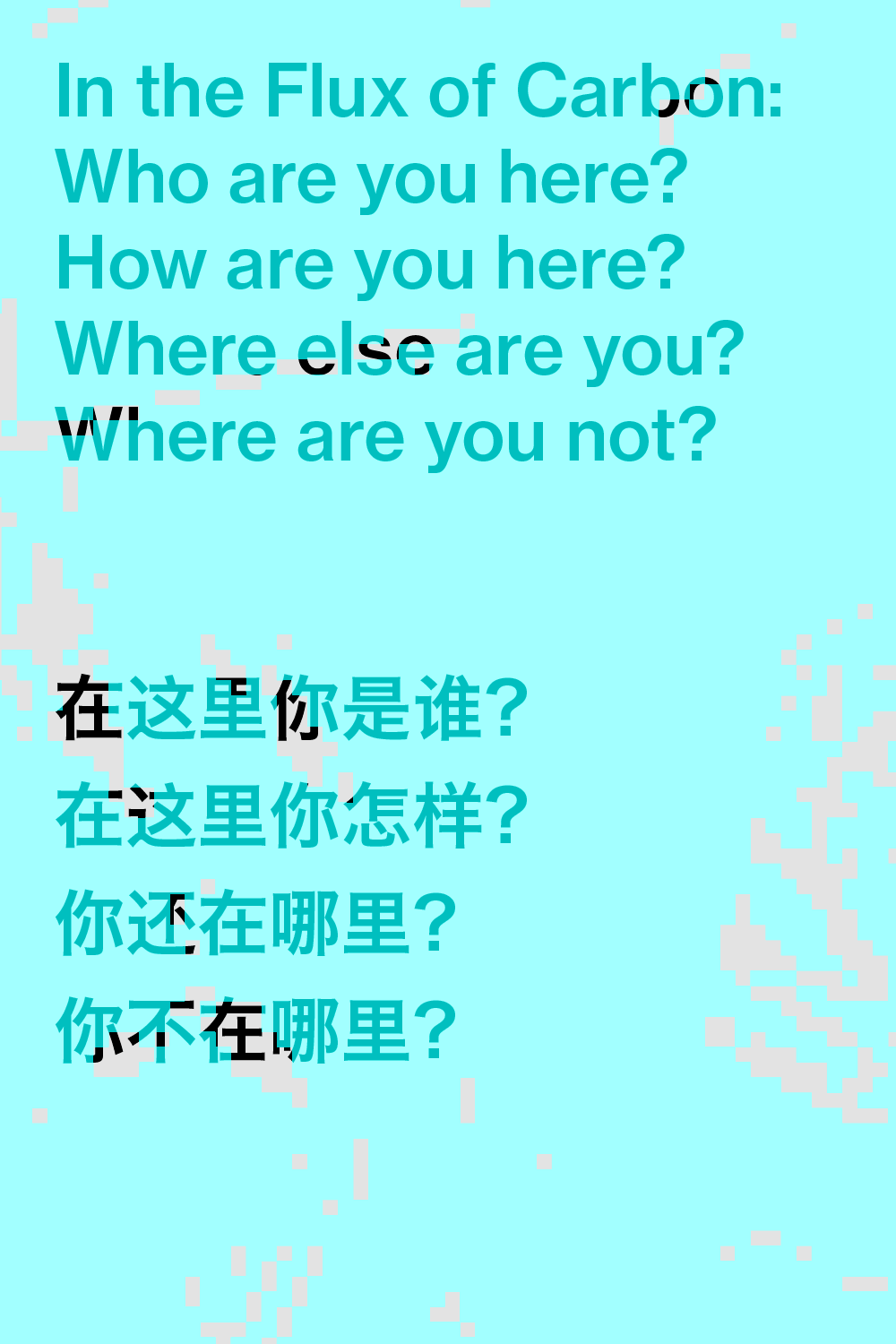
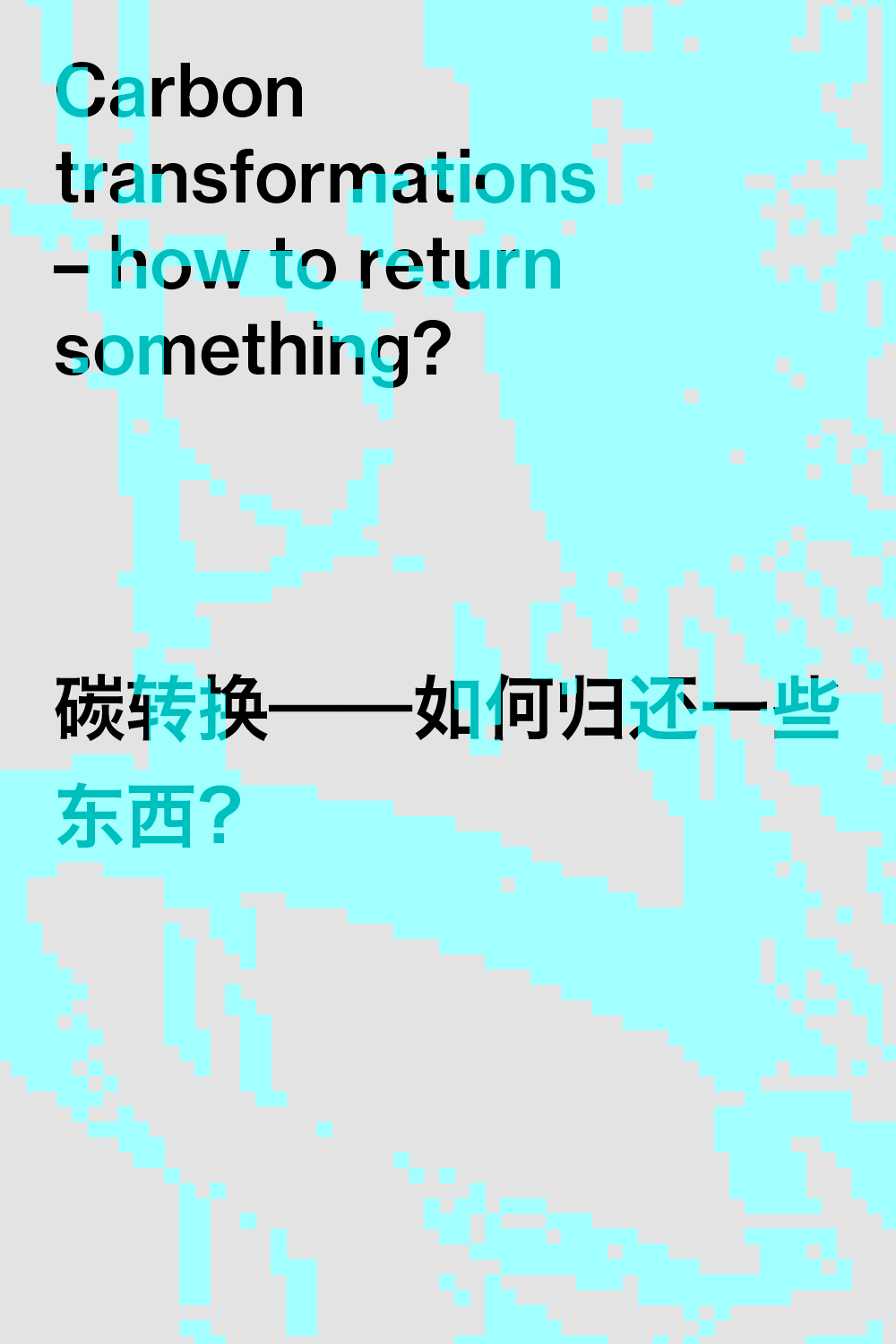
Anonymous, a carbon-based man with silica-based thoughts
CAO Daxu, an exhibition space planner only has 2 GB free space in his laptop drive
Anonymous, er ming ya ba wang(耳鸣鸭霸王)
To develop practical carbon listening skills, we must fully understand the carbon cycle and think about issues from the perspective of global climate change. We must use a carbon-based heart to listen to the organic world and resonate with it.
Carbon deafness is only due to your lack of attentiveness in listening to the world, especially the lack of care for the diverse organisms composed of carbon. We can never listen to carbon deafness, just as we cannot see carbon blindness.
Anonymous, a carbon-based man with silica-based thoughts
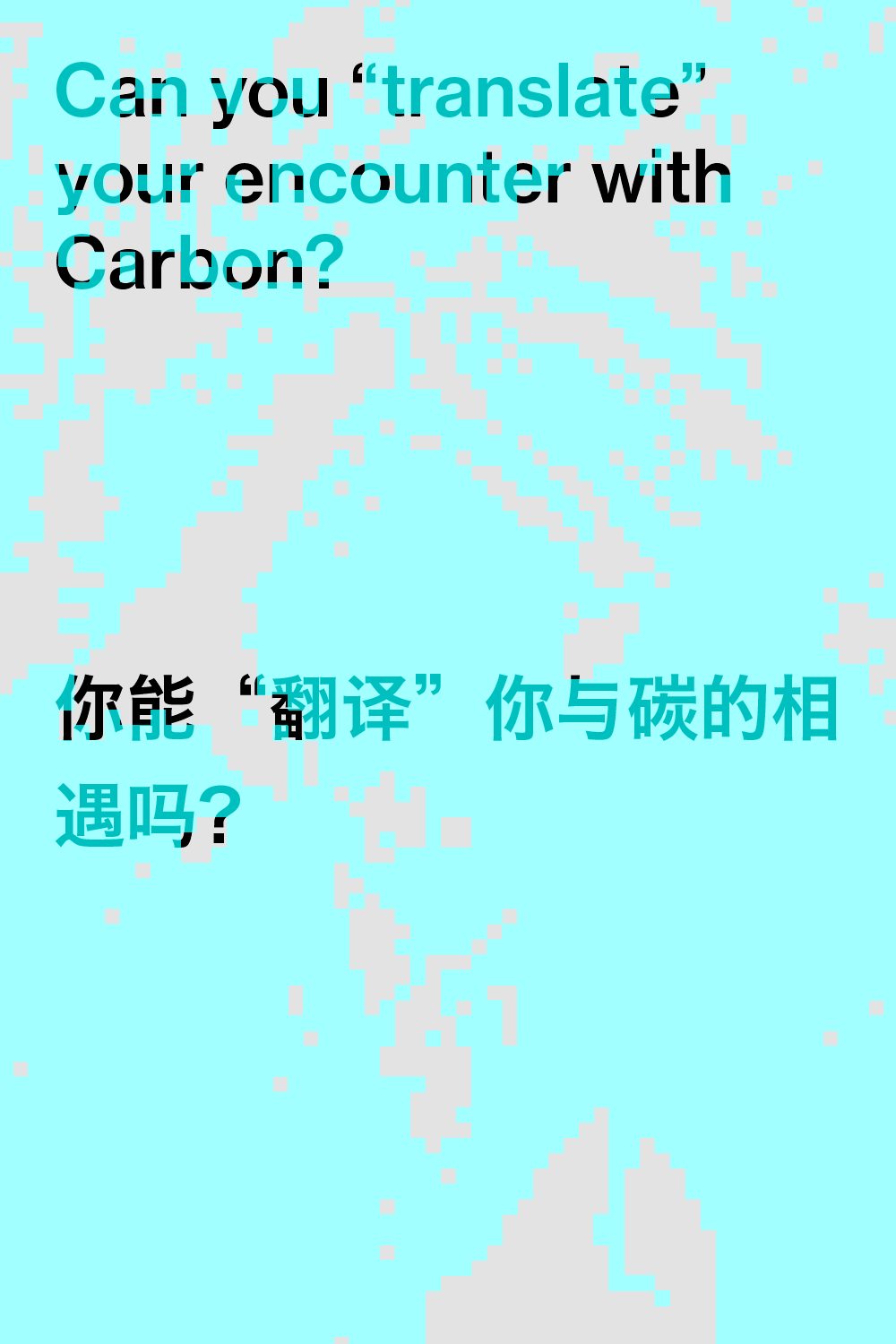
Joy, former practitioner in the field of climate change
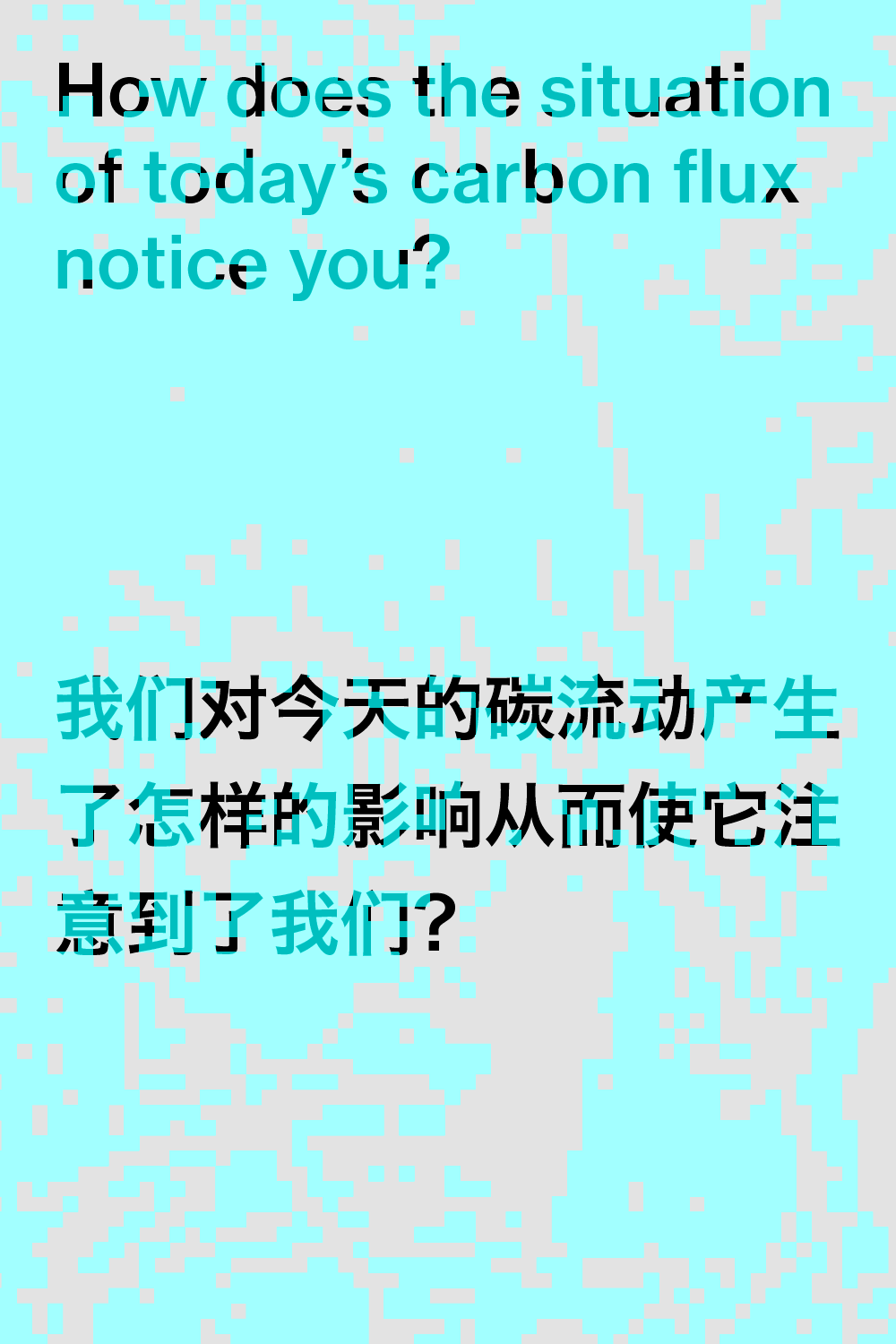
Here (the Daoist eco-village in Hangzhou) is an ecological and pollution-free village, formed by a group of kind-minded, nature-loving individuals dedicated to learning and preserving traditional Chinese culture. Our lifestyle here is self-sufficient; we produce everything needed for daily use and ensure that all our products are eco-friendly. Our ethos revolves around protecting our Earth Mother. Here, the materialistic desire is kept to a minimum. Residents relish in a back-to-nature existence, harmonising with the sky, earth, and fields. We deeply value the harmony between man and nature as well as observance of the laws of nature.
We learn from nature, seeking wisdom in its ways of living. Much like bees, we aim for harmony and symbiosis, sharing the tasks and collaborating towards common goals. Similarly, our way of existence is designed to harmonise with the environment, ensuring that our actions do not harm the ecology and striving to enhance the ecological balance within our village to make it healthier and more sustainable.
Here is different from there. People here care about our living environment. We live a lifestyle in harmony with nature and slow down our pace of life. Here, the concept of commuting for work is nonexistent; we voluntarily share tasks and responsibilities. Here, decisions are made collectively. We become a family, frosting a sense of familial unity that allows us to support each other and transcend blood relations. Here, people take what they need and contribute to the collective well-being. Together, we cultivate life in the eco-village.
I believe that eco-villages or eco-communities have been established in many places globally. Countries like Japan, Germany, Thailand, Africa, India, and others have seen the establishment of such communities. We are all united in our efforts to protect the environment. I do not have direct connections with such communities, but I believe there exists a shared motivation driving us towards a common goal to establish a low-carbon lifestyle.
Liang, an eco-farmer and a Gen-Y, returned to his hometown and has dedicated over nine years to the field of eco-farming
Dreaming constitutes the initial step, followed by information gathering and interpretation, which is dream analysis. I find myself envisioning as a carbon dream interpreter, transitioning from processing spiritual atoms to enacting carbon consummation… However, I must first achieve a minor goal – I’m trying to manifest and utilise my mobile phone in my lucid dreams. Despite dreaming almost daily, my mobile phone, a vital external organ, surprisingly never materialises in my dreams.
Anonymous, er ming ya ba wang(耳鸣鸭霸王)
For me, it is very difficult to talk about ‘carbon entanglement’ without giving close attention to the place-based, context-dependent, visceral, bodily, messy, vernacular, and local experiences. I have been doing research on a place called Fushun. It is a coal mining and heavy industrial city in northeast China which has the largest open-cast coal mine in Asia; it is also Asia’s first fossil fuel-related heavy industrial cluster. After more than a century-long extraction, Fushun suffers from numerous ecological problems that range from geological subsidence to water pollution.
As a researcher and image-maker, I was first drawn to the mining site because of the subliminal entanglement between geo-force, technology and human labor/human body. Mining registers as a technologically mediated force that is able to shape the viewer’s experience and cultivate an embodied proximity to geological matter. Such a ‘geo-intimacy’ informs both the labor conditions of filmmaking and the underlying geo-power indispensable in building China’s industrial modernity entwined with colonialism and imperialism. As I walked in the landscape with a camera, I felt a deep intimacy with the mountains and waters which have been radically altered by industries. The film I am currently editing brings together oral history, ethnography, local mythology, and media theory. I foreground the subterranean mine as a site of eventful mediation that produces geologic experience as a cinematic experience. This mediational view further connects the mine with the movie theater through the technique of breathing. My film also includes two major renewable energy infrastructure projects: a waste-to-energy incinerator and a hydropower station. As I talked to the female workers there, I also learned about the local mythologies of earth goddesses. The mountains and the waters they work on are intimately connected to the local myths. I was very touched by the conversations, personal encounters and mythic stories. My field research convinced me to include geo-intimacy and social-ecological entanglement in my work. I think to talking about any eco-related topics without understanding would be quite empty.
In this film, I also engaged with the dreamscape to create a blurred state between reality and fiction. One of the key reasons is actually censorship. The environment is a sensitive topic in China. I can’t make a film to utter a direct and critical voice about the eco-disasters caused by mining and petrochemical industry in China. Hence, I opt to use a woman’s dreamy voice to lead my journey in and out of major energy infrastructures. The Dream is a rhetorical device that creates a para-reality and also a pragmatic way to dodge censorship.
Mia Yu, Beijing-based researcher, curator and filmmaker
A common logic for problem-solving is: identifying the problem, proposing a solution, and implementing the solution. This logic is evident in the above three forms. Scientific experiments rely on this common logic, which will not be further elaborated here. Literary works entail identifying problems. Through analysis of the current situation, either directly or indirectly, this is bound to trigger some readers or social reflections, perhaps planting a seed in people’s minds. Artistic imaginations are more like scientific experiments because they not only explore the current situations and propose some imaginative thoughts, but also provide some sort of answers that may more or less promote and enlighten social development or consciousness. Like an expanding flat circle, a small breakthrough and contemplation may not bring much at once, but over time, small steps can lead to significant changes on a macro level.
Therefore, people should dare to innovate boldly, but at the same time, adhere to objective laws (such as the conservation of energy, and the non-existence of perpetual motion machines). For the development of the whole society, whether in terms of technology or ideology, it can bring many subtle and imperceptible benefits.
Chaofan Wan, juggling micro-nano materials for energy storage and self-healing tech, all while chasing that M.S. in Inorganic Chemistry
I think not-knowing/not-anymore-knowing is such a process of breaking away from the thinking inertia and re-examining knowledge or forms of knowledge, dismantling the history and latent power dynamics of a certain knowledge paradigm. This is certainly not something new. As for the forms of not-knowing/not-anymore-knowing, I believe that the answer still lies in the above rethink on carbon rotations and the greenhouse effect that requires pluralizing imaginations to sense today’s carbon imaginary and ecological reality.
CAO Jiamin, an art worker powered by bubble tea… and O2

Anonymous, a learned and worldly idealist
My ‘dirtiness’ can also manifest as the rejection and abandonment of the immaculate conception of technological or cultural products that are entwined with ideologies implicitly endorsing coal power and the burning of fossil fuels. I’m not shy to let my muddy rustles rouse the supporters who hold their pure misconception that development and progress can occur with sacrificing the welfare and survival of other species in the process. In this scenario, I hope, my ‘dirtiness’ can swirl through the air.
BI Xin, creates exhibitions and can hold her breath for 91 seconds
